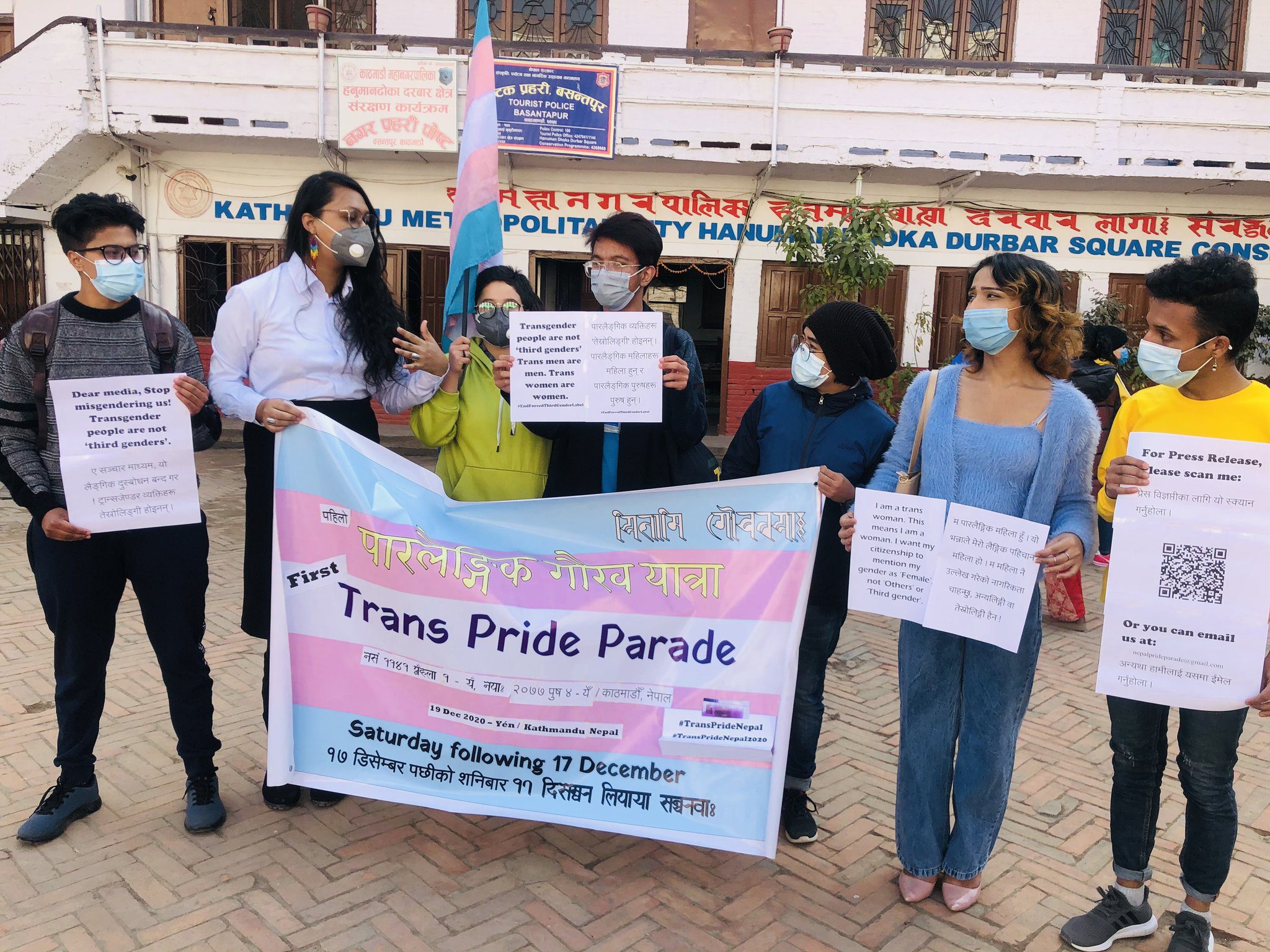By Feenzu Sherpa
Queer Youth Group hosted the country’s first ever Trans Pride Parade in Basantapur, Kathmandu, on Saturday.
The Parade was scheduled on the first Saturday following December 17 so as to coincide it with the day when the term ‘paralaingik’ (transgender in English) was introduced in Nepali language in 2018.
During the Parade, participating transgender community demanded that their gender identity be defined as ‘paralaingik’ and not ‘tesro lingi’ (third gender) stating that Nepal’s categorization of transgender as the third gender reflected “our society’s deep-rooted patriarchy and misogyny”.
Trans rights activists have long been saying that trans men are men and trans women are women. According to Pride Parade Nepal, semantics strongly navigate how the trans population is perceived, understood, and how their legal rights can further advance.
Legal advocacy to introduce and use ‘paralaingik’ in Nepali language was forward by Rukshana Kapali, a trans woman and LGBTQIA+ rights activist.
Stating that Nepal’s laws have yet to ensure the rights of its transgender population, participants of the Parade also demand that their citizenship categorize them as men and women instead of ‘tesro lingi’ or ‘others’.
“Before the 2018 decision, the term ‘transgender’ didn’t exist in Nepali language, which had caused derogatory and wrongful referring of trans people. Marking this linguistic landmark on 17 Decmber, 2018, we celebrate Trans Pride Parade the following Saturday,” the official statement of Nepal Pride Parade reads.
“Trans people, in particular trans men and trans women not just face transphobia, discrimination and stigma from cisgender heterosexual population, but also within the ‘LGBTIQ+ movement’. The transgender rights activism is a movement of its own and it shouldn’t always be seen as a sub-set of the ‘LGBTIQ+’ movement.”
“Therefore, the Trans Pride Parade in Nepal is to highlight the issues, rights and visibility of trans men and trans women, and more largely observe as a celebration.”










